P. Marlin November 2015
 Successful in banking, mining and cotton, H.F. Dutton was considered a
leading businessman in turn of the century Gainesville (1900), bringing much
growth to the area. Dutton's company became the region's largest
cotton gin dealer as well as the largest phosphate exporter in the Southeast.
In addition, Dutton and his partners opened the Dutton Bank, one of
only three banks in Florida.
Successful in banking, mining and cotton, H.F. Dutton was considered a
leading businessman in turn of the century Gainesville (1900), bringing much
growth to the area. Dutton's company became the region's largest
cotton gin dealer as well as the largest phosphate exporter in the Southeast.
In addition, Dutton and his partners opened the Dutton Bank, one of
only three banks in Florida.
Henry Forest Dutton was born March 16, 1837. Educated in Vermont, he attended Vermont University in Burlington for one year. In 1862 he entered the U.S. Army as a captain and was soon promoted to lieutenant-colonel. Dutton fought in the Civil War and was severely wounded in 1864 at which time he was honorably discharged.15
When the Civil War ended Dutton, with his wife Kate, moved to South Carolina. While there, Dutton began working with John Nichols of the John G. Nicholas and Company, purchasers of Sea Island cotton. Dutton decided to move further south and upon arrival Gainesville in 1877, he established his own mercantile firm, H.F. Dutton and Company.
A prominent Gainesville citizen, Dutton served as alderman, President of the Board of Trade, City Council President and the President of the Board of Trustees of the East Florida Seminary (pre- University of Florida). He was highly thought of in the community, as mentioned in the "History of Gainesville," "Colonel Dutton in carrying on business of banking, cotton buying and phosphate mining, played a large part in the development of this section of the state. He was a fine man, though conservative, public spirited and stood for the best things in the community." 5
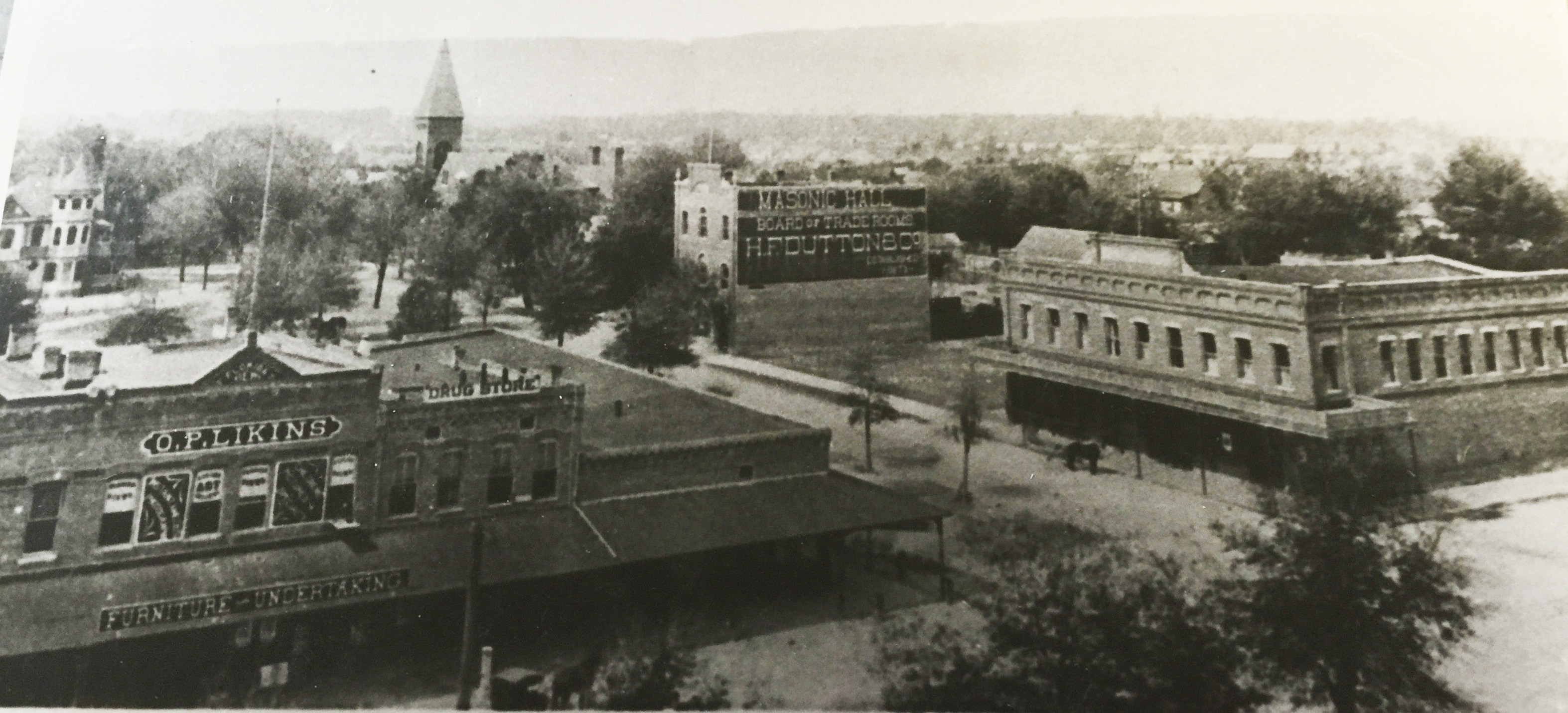 The above photo was taken from the Gainesville courthouse and
shows University Avenue (Liberty Street) looking west. The H.F.
Dutton home is at the top left of the photo and across from that is
the 1st Presbyterian Church. In the center of the photo is the
newly built Dutton Bank. The large building on the right was once
the Endel Bros. Shoes, Clothing and Dry Goods store. The same
building would later house the Gainesville National Bank
(1907-1918) and Woolworth's for nearly 60 years.
Matheson Museum Collection.
The above photo was taken from the Gainesville courthouse and
shows University Avenue (Liberty Street) looking west. The H.F.
Dutton home is at the top left of the photo and across from that is
the 1st Presbyterian Church. In the center of the photo is the
newly built Dutton Bank. The large building on the right was once
the Endel Bros. Shoes, Clothing and Dry Goods store. The same
building would later house the Gainesville National Bank
(1907-1918) and Woolworth's for nearly 60 years.
Matheson Museum Collection.
H.F. Dutton and Company partners included John G. Nichols (joining Dutton from South Carolina) and Walter Robinson (Rhode Island). In 1882 the company purchased an existing cotton gin for $40.00 at an auction conducted in front of the new courthouse in Gainesville. The new H.F. Dutton ginneries, now located on South Main Street in Gainesville, became a major ginner of Sea Island cotton in the South. Sea Island cotton, or long-staple cotton, was considered a stronger cotton than its counterpart, short-staple cotton. Alachua county farmers grew both types of cotton, however, the long-staple cotton was considered equal to the superior quality of cotton crops grown in the Sea Islands of South Carolina. The historic Haile Homestead, built in Gainesville in 1856, was a Sea Island cotton plantation.
Before the formation of the Dutton company, cotton growers in Alachua County would trade their cotton for dry goods, groceries, and hardware, but when the H.F. Dutton Company began to pay premium prices (gold) for long-staple cotton, the growers were encouraged to improve their crops and quality of cotton. As a result, the finer cotton product received awards at expositions in the United States and abroad, including the Paris Exposition of 1878. Cotton from H.F. Dutton and Company was considered the best in the market and Gainesville became one of the largest cotton shipping stations in the state. On the company's site were 20 cotton gins, a process to extract oil from cotton seeds, a fertilizer plant and manufacturing of Doig Cotton Gin, invented by Mr. James Doig, one of Gainesville's earliest citizens.7
The Dutton Gin handled one-quarter of all the cotton raised in the state, and by 1903 it was reported that Dutton and Company were the largest buyers of Sea Island cotton in the world and they virtually controlled the Sea Island cotton output in Florida. The Dutton Gin employed over 100 people and had a capacity of 30 cotton bales an hour with each bale averaging 400 pounds. 17
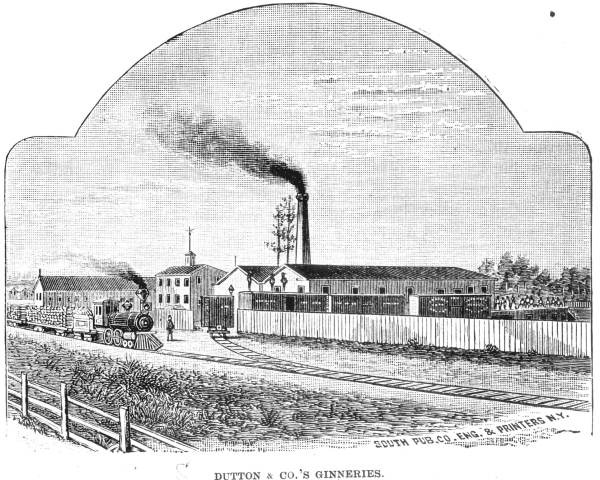 Dutton and Co. ginneries on South Main Street.
Florida State Archives.
Dutton and Co. ginneries on South Main Street.
Florida State Archives.
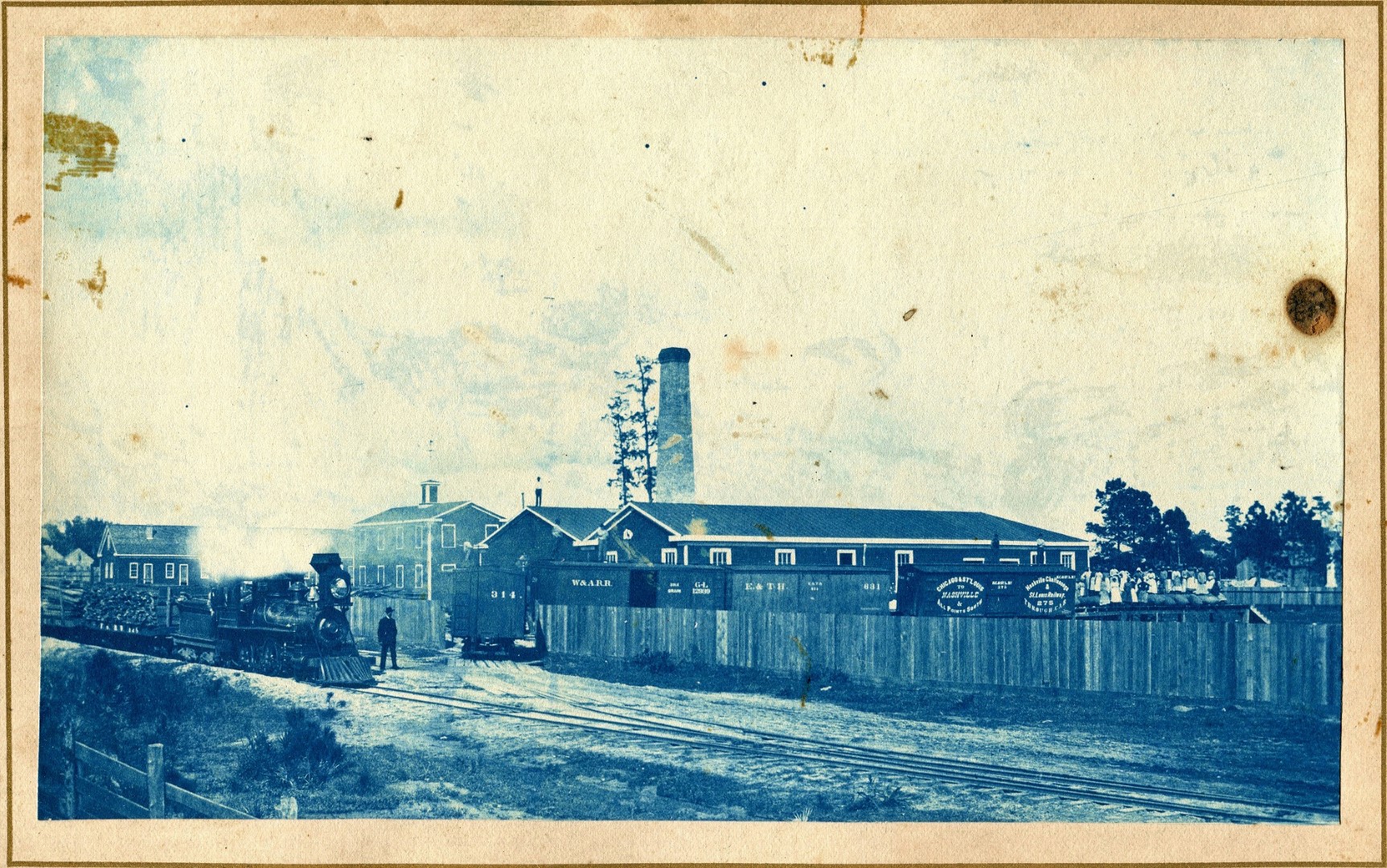 Dutton and Co. ginneries on South Main Street. Matheson Museum.
Dutton and Co. ginneries on South Main Street. Matheson Museum.
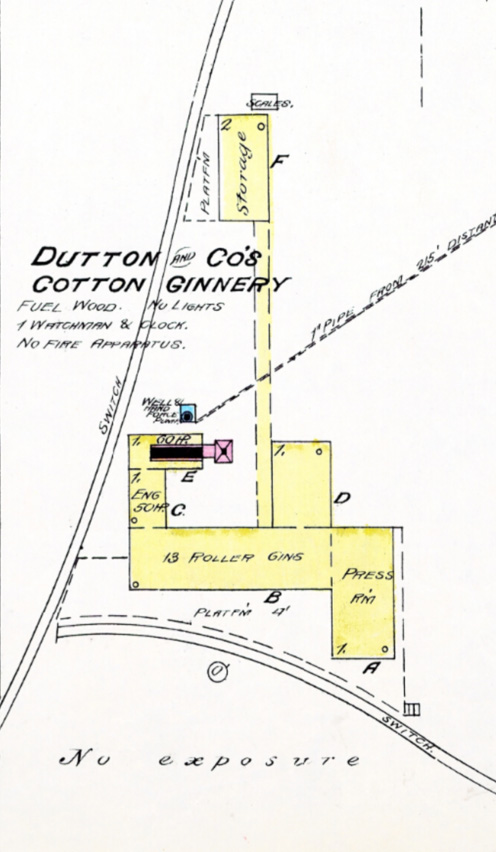 H.F. Dutton Ginneries South Main Street. 1884 Sanborn Map
H.F. Dutton Ginneries South Main Street. 1884 Sanborn Map
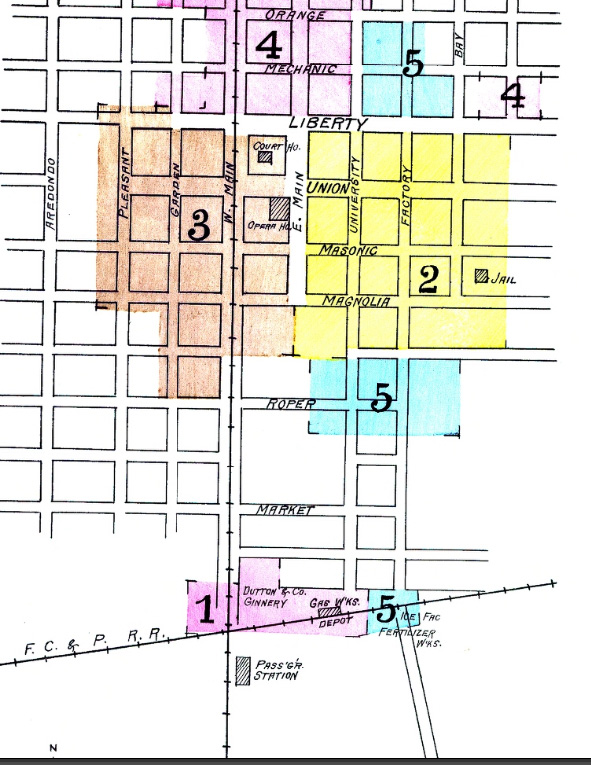 Above image is an
(1892 map)
of Gainesville showing the Dutton and Company property, courtesy
UF Digital Collections.
Above image is an
(1892 map)
of Gainesville showing the Dutton and Company property, courtesy
UF Digital Collections.
In the 1890's Dutton and Company engaged extensively in mining hard rock phosphate under the name of the Dutton Phosphate Company. In 1903, Dutton Phosphate Company purchased the Ford & Hiller P hosphate Company holdings of Ocala, Florida making Dutton Phosphate Company one of the largest phosphate operators in the world.8
Dutton had mines from Ft. White to Dunnellon as well as in Alachua County. Communities sprang up around the company mines with one of them called Dutton. Many of the mines were connected by a railroad owned by the company which would ship the mined rock throughout the United State and Europe, with most of the rock being shipped to Germany for commercial use.
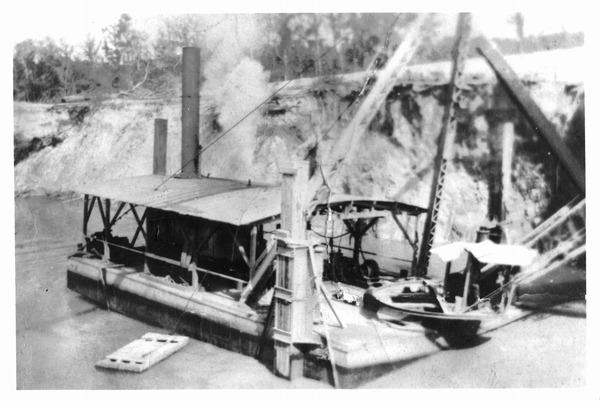 A dredge boat at one of the Dutton Company's phosphate mines.
Florida State Archives.
A dredge boat at one of the Dutton Company's phosphate mines.
Florida State Archives.
With business going well, Dutton and Company decided to open a bank to facilitate their own business. The bank would be one of only three banks in the State of Florida. A new building on Liberty street would house the bank in 1885 (the building still stands today at 22 W University Avenue).

 Inside the Dutton Bank. Matheson Museum.
Inside the Dutton Bank. Matheson Museum.
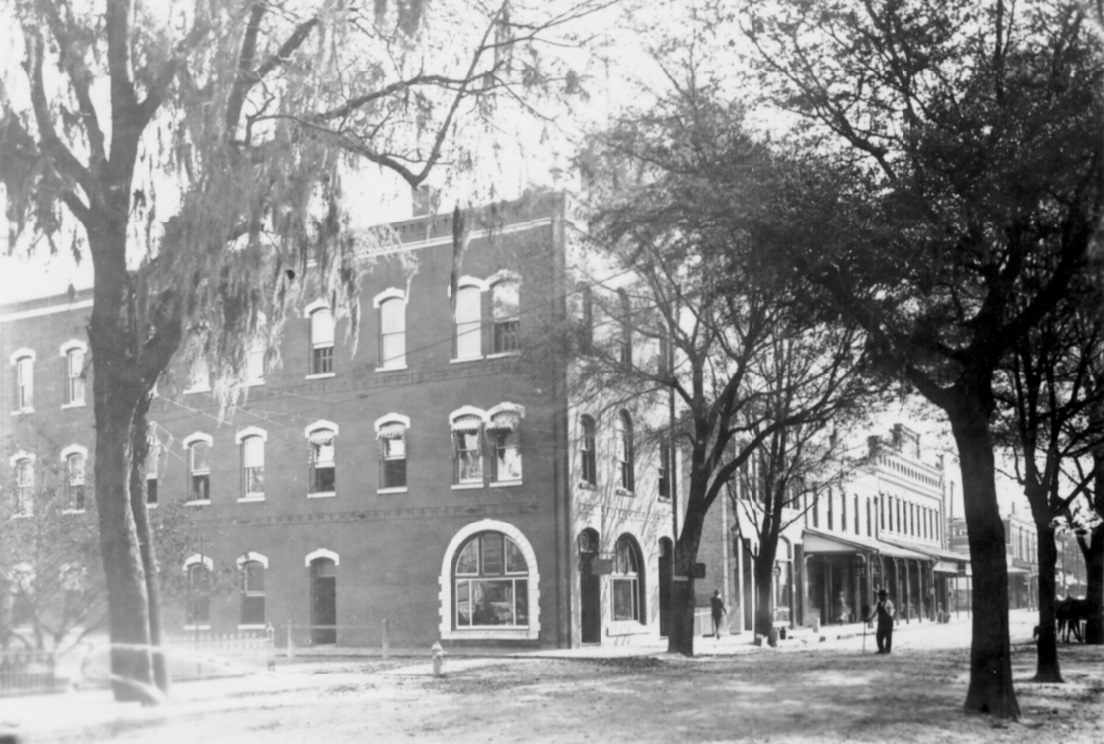 The Dutton Bank on Liberty Street (22 W University Avenue) in downtown
Gainesville. Matheson Museum.
The Dutton Bank on Liberty Street (22 W University Avenue) in downtown
Gainesville. Matheson Museum.
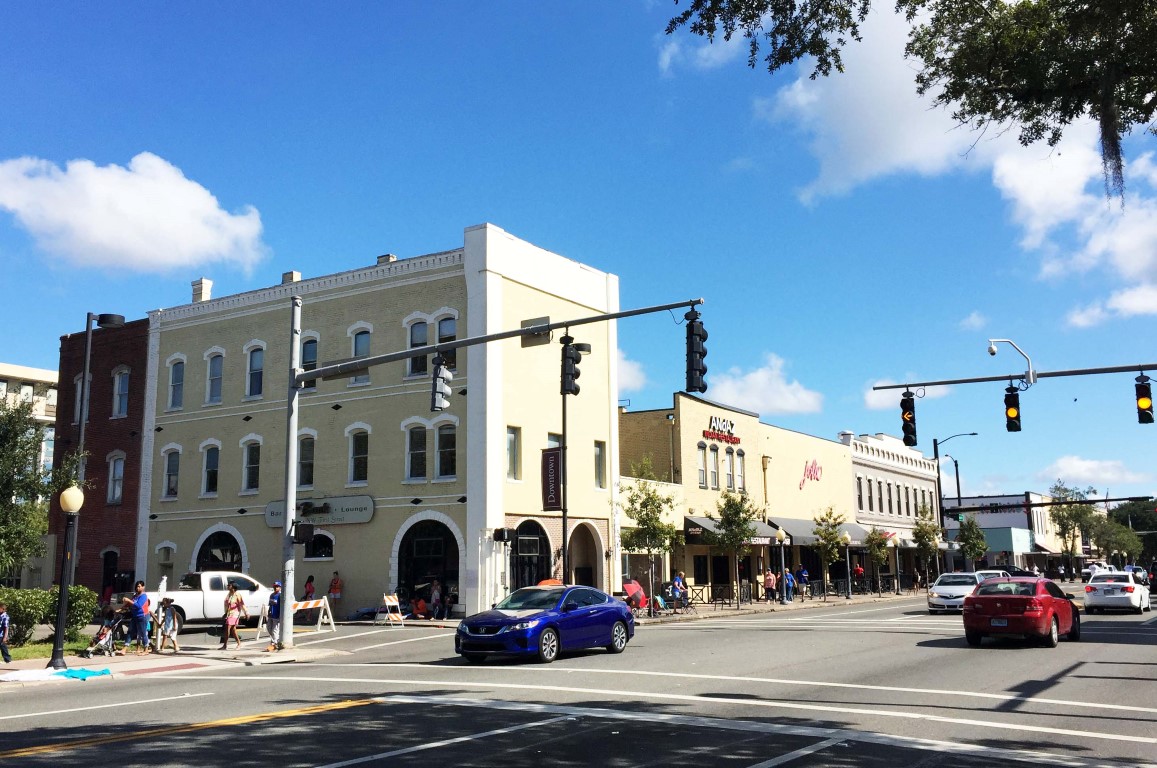 The Dutton Bank today. P. Marlin
The Dutton Bank today. P. Marlin
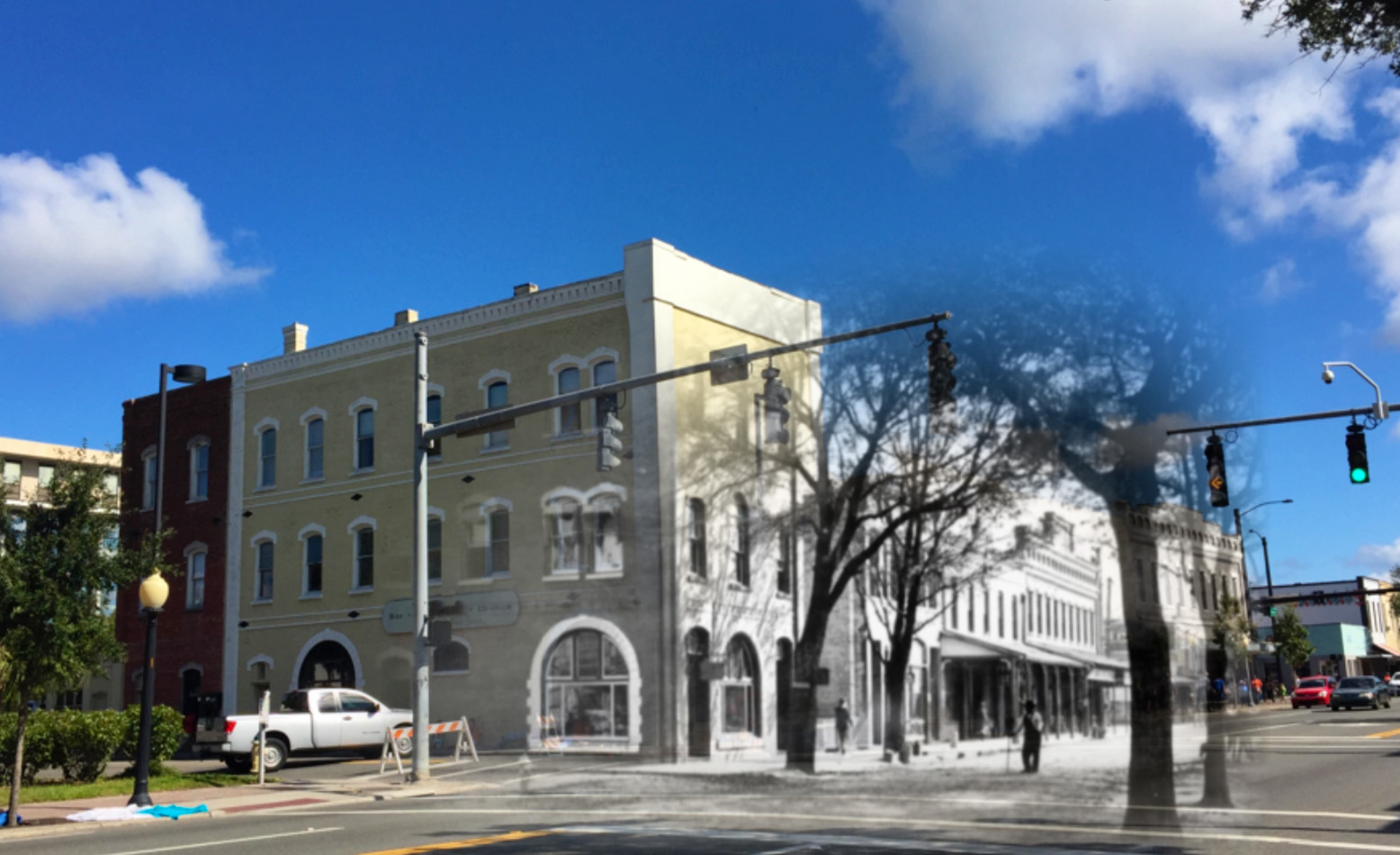 Above photo is a then and now depiction of the Dutton Bank (1890 and 2015).
Above photo is a then and now depiction of the Dutton Bank (1890 and 2015).
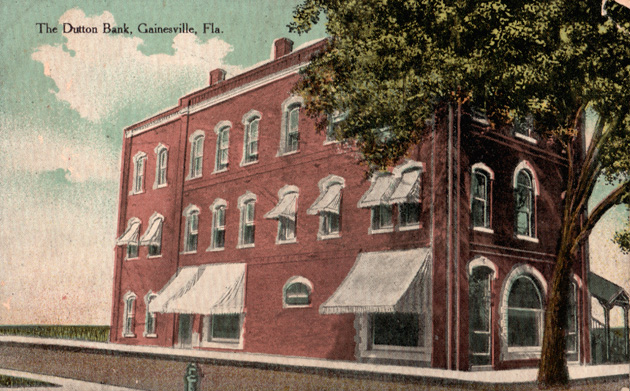 Postcard. UF Digital Collections.
Postcard. UF Digital Collections.
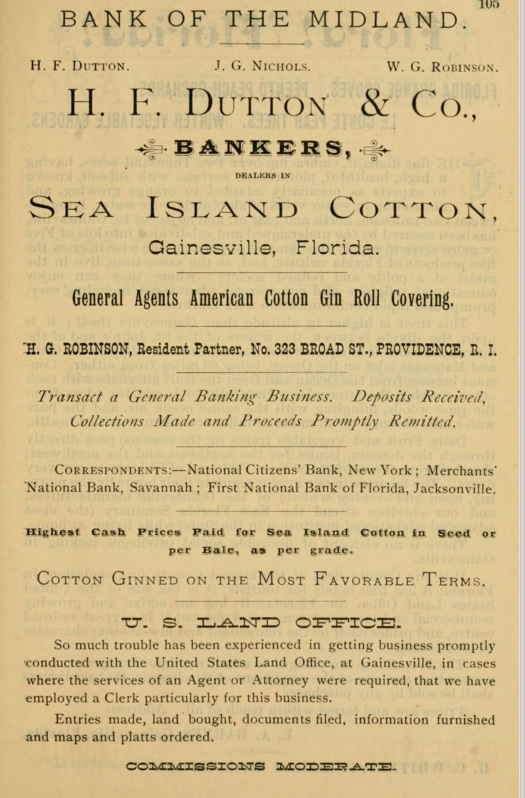 H.F. Dutton Advertisement in
Eden of the South by Carl Webber
H.F. Dutton Advertisement in
Eden of the South by Carl Webber
In 1882 Dutton purchased property on West University Avenue (Liberty Street) & 2nd Street (Pleasant Street) and built one of the most prestigious homes in Gainesville. The area was originally the site of the town's first public school houses, and later, belonged to Dr. Babcock, an early Gainesville resident who lived in a log cabin on the site in 1853. Dr. Babcock sold the property to Judge Dawkins, a prominent lawyer, who sold it to Dutton deed / deed).
The Dutton home was eloquently described in Carl Webber's "Eden of the South",
"…the handsomest residence is that of Col. H. F. Dutton, of the cotton-buying and banking firm of H.F. Dutton & Co. It is situated on Liberty Street and has a most beautiful garden with lawns and walks about it, and fountains playing from an artesian well."
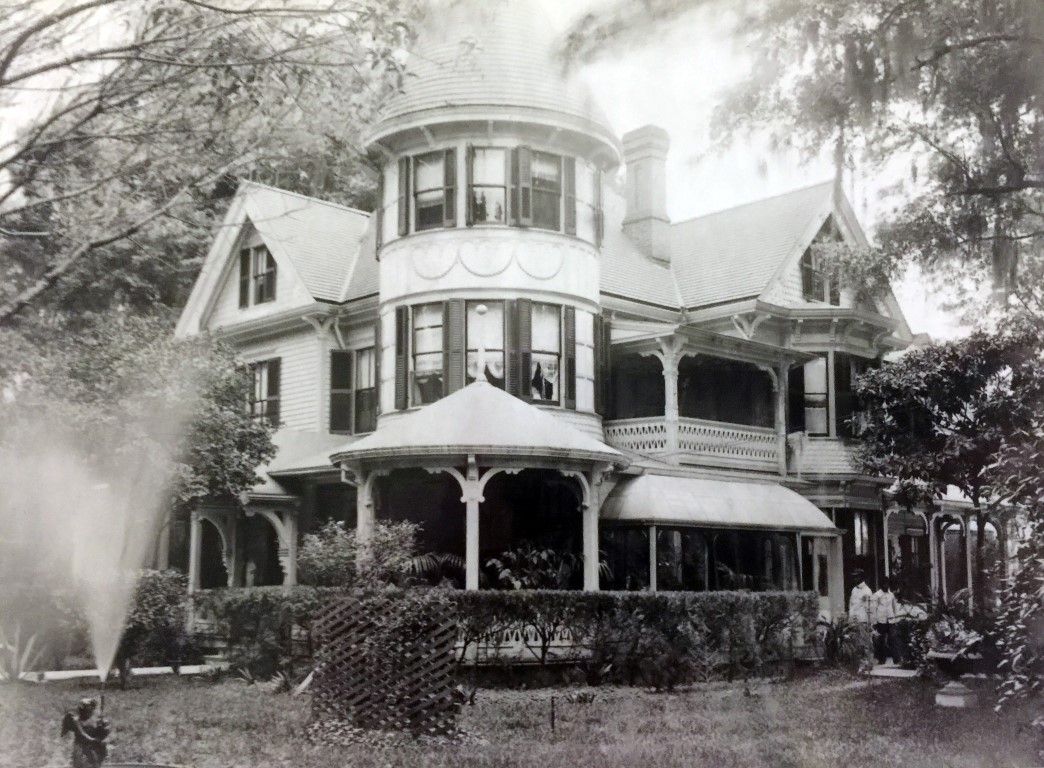 The Dutton home on University Avenue (Liberty Street) and 2nd Street (Pleasant Street).
Matheson Museum.
The Dutton home on University Avenue (Liberty Street) and 2nd Street (Pleasant Street).
Matheson Museum.
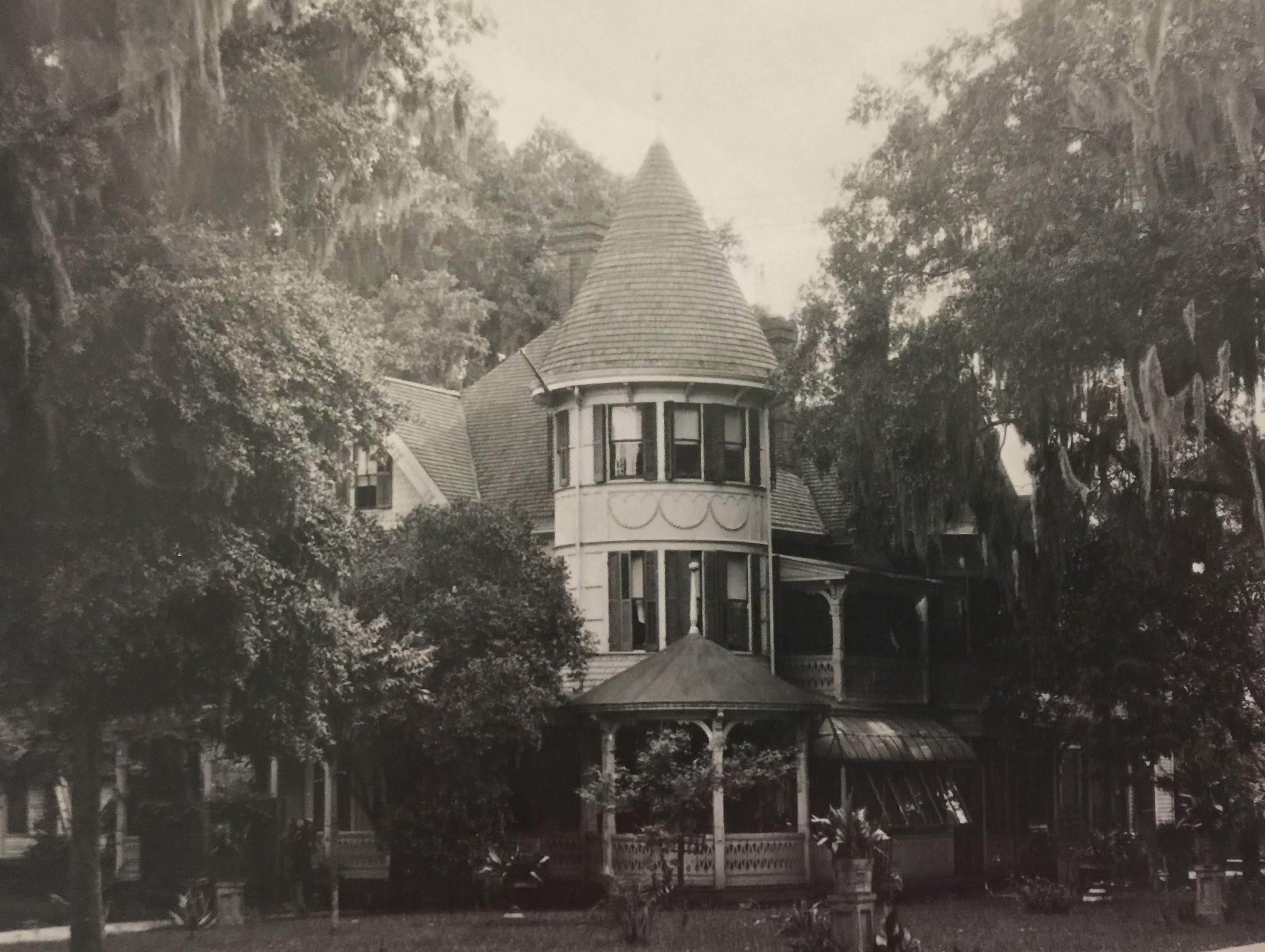 The Dutton home on University Avenue (Liberty Street) and 2nd Street (Pleasant Street).
the Matheson Museum.
The Dutton home on University Avenue (Liberty Street) and 2nd Street (Pleasant Street).
the Matheson Museum.
 Henry Dutton sits in the middle of the third row at his home on University Avenue (Liberty Street) and 2nd Street (Pleasant Street). Photo courtesy of
the Matheson Museum. P.K. Yonge Library of Florida History.
Henry Dutton sits in the middle of the third row at his home on University Avenue (Liberty Street) and 2nd Street (Pleasant Street). Photo courtesy of
the Matheson Museum. P.K. Yonge Library of Florida History.
In 1882-1883, an artesian well was dug in the front of the country courthouse to provide water for citizens and horses. While drilling, gold bearing ore was struck at 176 feet. When H.F. Dutton decided to dig an artesian well on his property, gold was discovered again. J.H. Post, a Gainesville jeweler at the time, examined the rocks that were brought up and recognized the gold flakes in them. Samples were sent to Harvard University for evaluation. They estimated the yield would be $4.16 of gold for every two thousand pounds of ore. This exceeded the cost of mining it, so the project was abandoned. The cost turned out to be too much for too little gold. The gold vein extended from the courthouse to Dutton's home and was believed to extend to the Sweetwater Branch area.
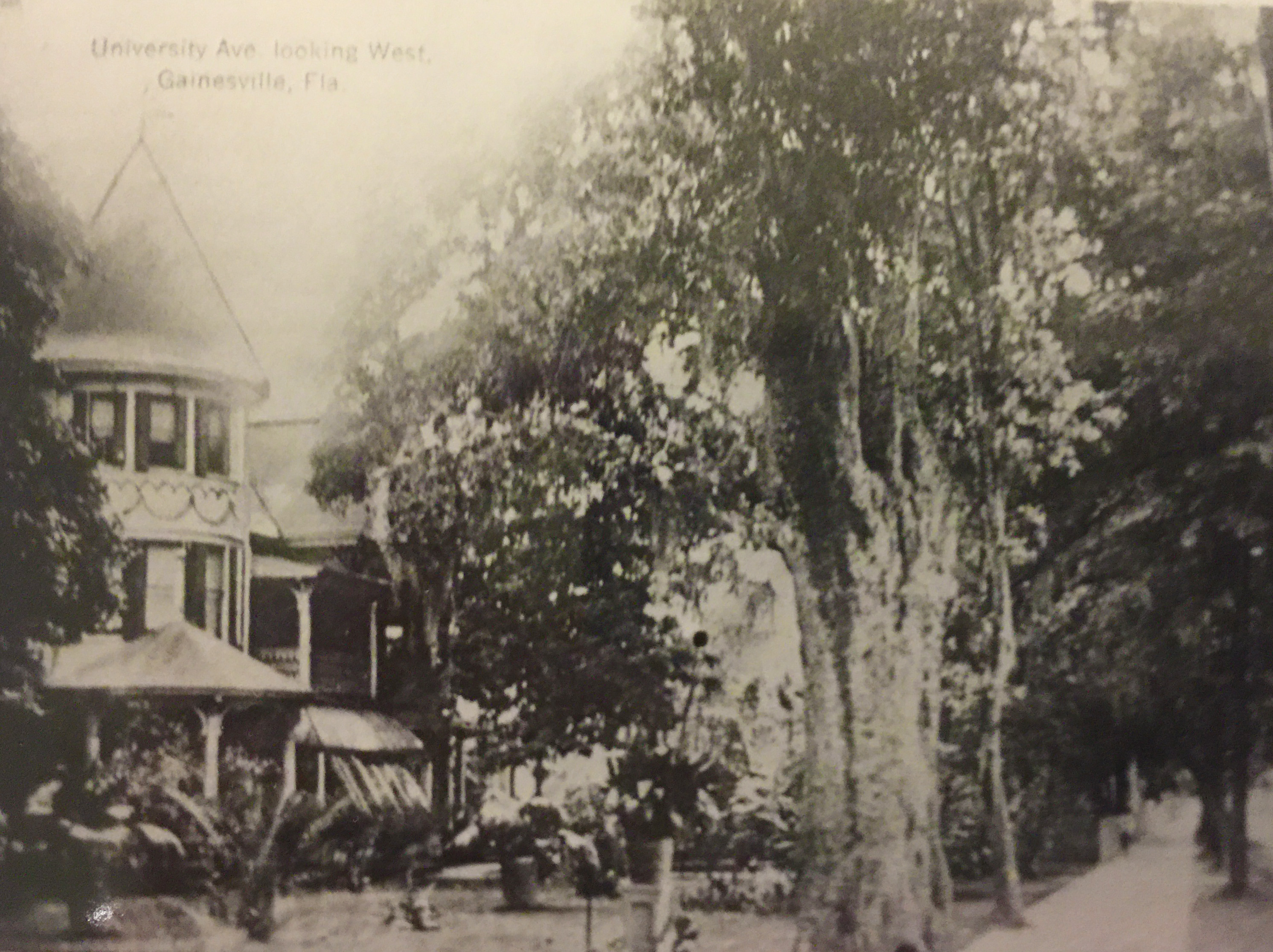 The Dutton home on University Avenue (Liberty Street) and 2nd Street (Pleasant Street).
Photo courtesy of the Matheson Museum.
The Dutton home on University Avenue (Liberty Street) and 2nd Street (Pleasant Street).
Photo courtesy of the Matheson Museum.
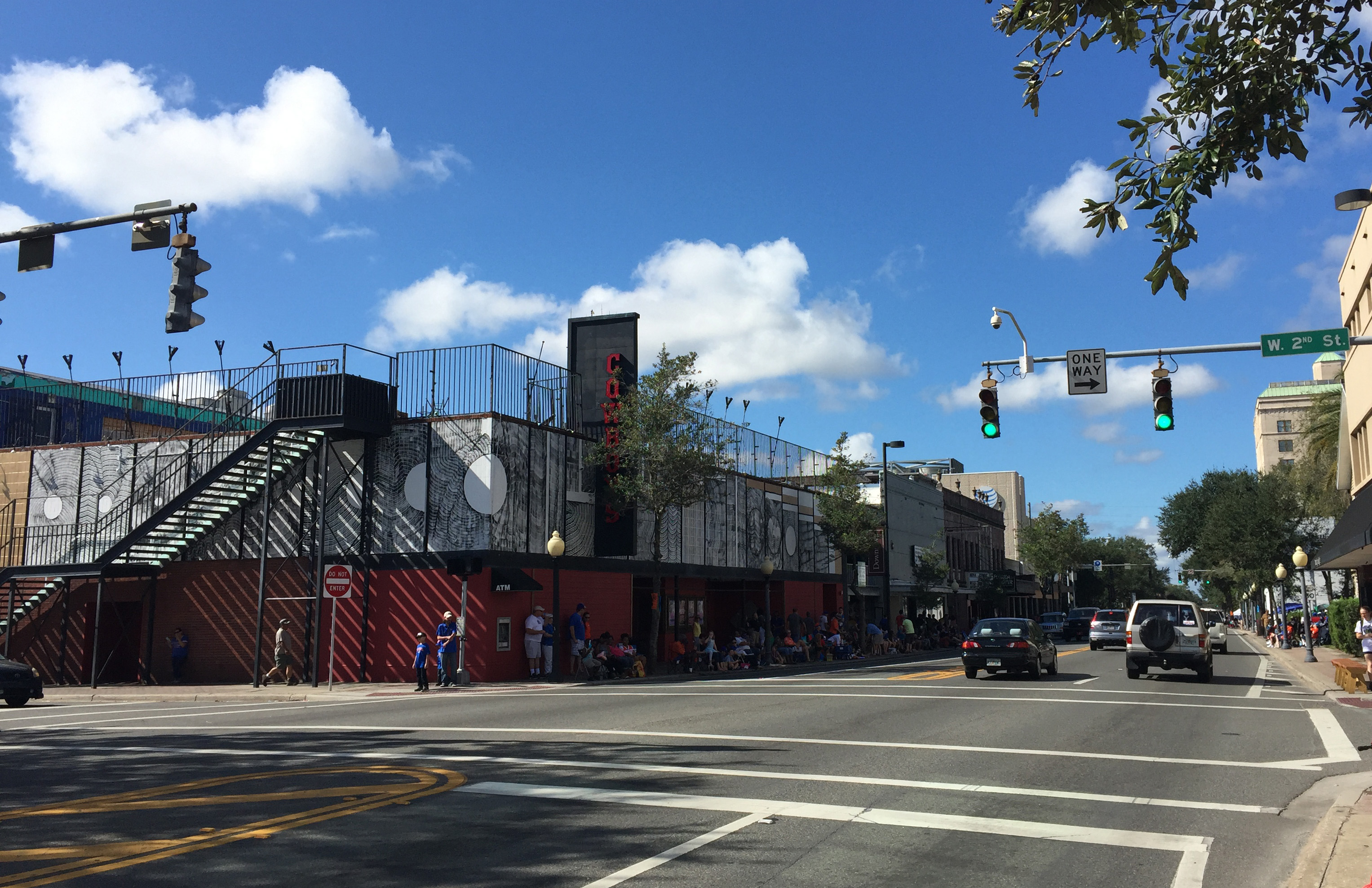 The corner of University Avenue and 2nd Street, where the Dutton home stood at
the turn of the century and one of the areas where gold was discovered.
The corner of University Avenue and 2nd Street, where the Dutton home stood at
the turn of the century and one of the areas where gold was discovered.
The H.F. Dutton ginnery continued to be run by Dutton and Company until 1904-07 when it was sold.9 Not long after the sell, the gins, now owned by W.W.Gordon, were destroyed by a raging fire. Starting in the lint room where the fire spread quickly, the cotton gin building was destroyed by the time firemen arrived on the scene. It was all the firemen could do to protect the nearby dwellings, the adjacent Standard Oil gas tank and the Gainesville Gas Company's gas tank. The loaded railroad cars on the side track were in flames when the firefighters arrived, but they managed to rescue them. The cotton gin building, 23 cotton gins, 50 bales of cotton, thousands of pounds of seed cotton and two carloads of cotton seed were all destroyed. Seven months after the fire, the property was sold to the local Baird Hardware Co. for $6000. By 1910, the long cotton market in Florida would falter when an infestation of the boll weevil virtually wiped out the cotton industry. 17 18
In 1907, due to the death of partner W.G. Robinson and the advancing age of H.F. Dutton and John G. Nichols, the partners decided to close the Dutton Bank. A notice to all depositers was posted in the newspaper10 requesting that they come and withdraw their deposit within the next 30 to 60 days. A few days later, a Major W.R. Thomas of Gainesville began the process of organizing the Dutton bank under a state charter with himself as president. The bank continued to operate at the same Dutton Bank location and was listed in the 1910 directory as "the oldest bank in central Florida." 11, 12

In 1914, the Dutton Bank and the Gainesville National Bank consolidated and moved to the building just east of the original Dutton Bank building (above photo). This building originally housed the Endol Bros. Clothing and Dry Goods and eventually Woolworths. In 1918 the Gainesville National Bank was absorbed by the Florida National Bank of Gainesville.
Around the time of World War I, with the European markets closed and rich deposits of pebble phosphate being developed in south Florida, the Dutton Phosphate Company went out of business.
H.F. Dutton and Kate Cathan married in 1863 and had one son, Henry Forest Dutton, Jr, who was born April 1, 1880 in Gainesville. H.F. Dutton traveled extensively due to his business and Kate would spend her summers in Vermont.13 H.F. Dutton died March 19, 1916 (will) and Kate Cathan Dutton (will) on February 15, 1922, both in Gainesville. They are buried at the family vault in Vermont. Henry Dutton Jr., died suddenly of pneumonia in 1918. 16 The beautiful Dutton home on Liberty and Pleasant street was torn down in the 1920's to make way for the Florida Theater (photo below) which opened in 1928 (building is still standing on University Avenue).
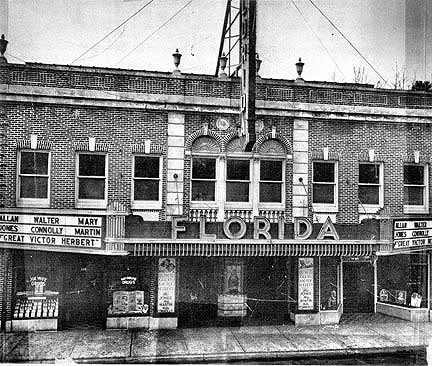
1 History Records Further Adventures of Dutton Enterprises Gainesville Sun October 8, 1983
2 Dutton Had Place in Industry Gainesville Sun September 25, 1983
3 A Peek at Gainesville in its very early years Gainesville Sun November 6, 1983
4 Eden of the South Carl Webber 1966
5 History of Gainesville Florida Jess G. David 1966
6 History of Banking in Florida 1828-1954 J.E. Dovell
7 The Blue and the Gray James Doig shares his business experiences with H.F. Dutton, Gainesville Daily Sun April 7, 1906
8 Big Phosphate Deal, The Gainesville Star May 5, 1903
9 The Dutton Ginnery Will Begin Monday Gainesville Daily Sun September 2, 1906
10 Notice of Bank Closure Gainesville Daily Sun July 14, 1907
11 Another Bank is to be Established Gainesville Daily Sun May 23, 1907
12 Dutton Bank Makes Splendid Showing Gainesville Daily Sun July 29, 1909
13 News of the City Gainesville Daily Sun June 4, 190714 Cotton and the Dutton Bank Mike Carter July 1977
15 History of the Eighth regiment of Vermont volunteers 1861-1865
16 Obituary Record of Yale Graduates 1915-1920
17 A History of Baird Hardware. Matheson Museum
18Gordon Ginery was Destroyed by Fire Gainesville Daily Sun October 30, 1907